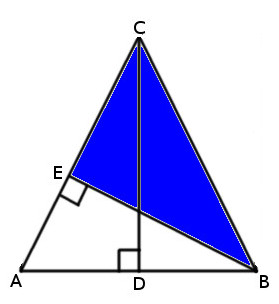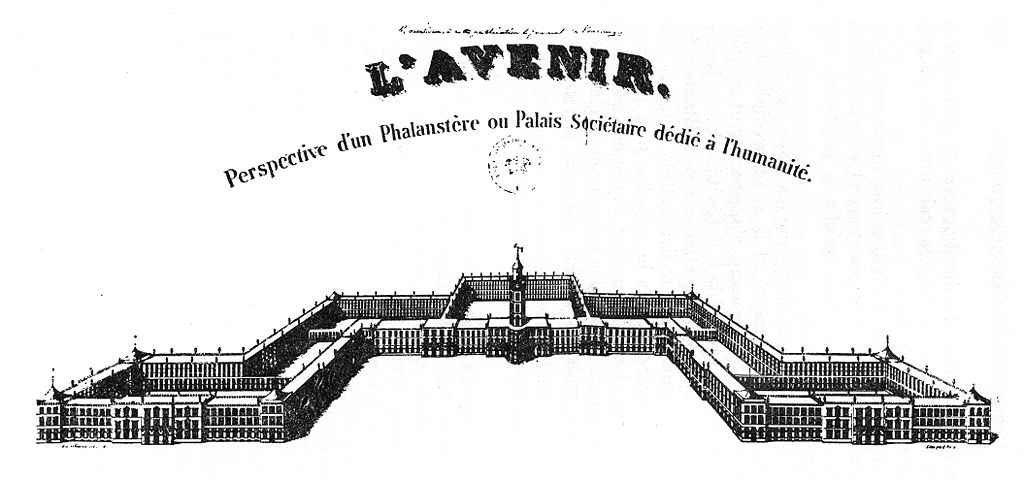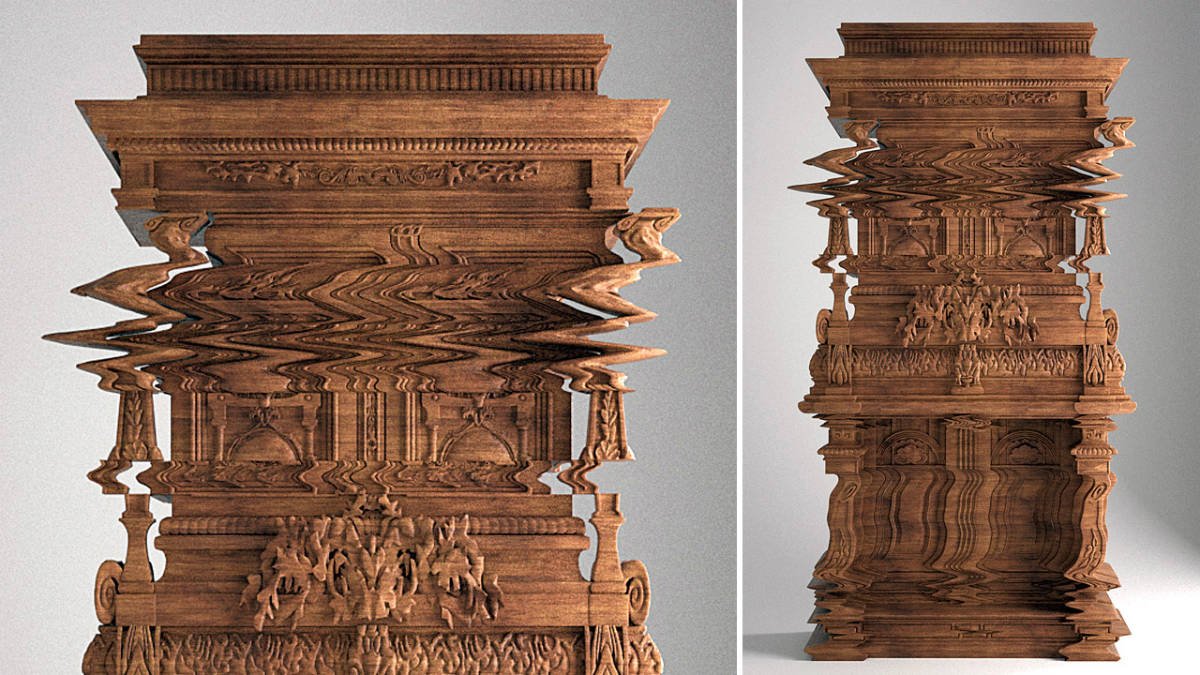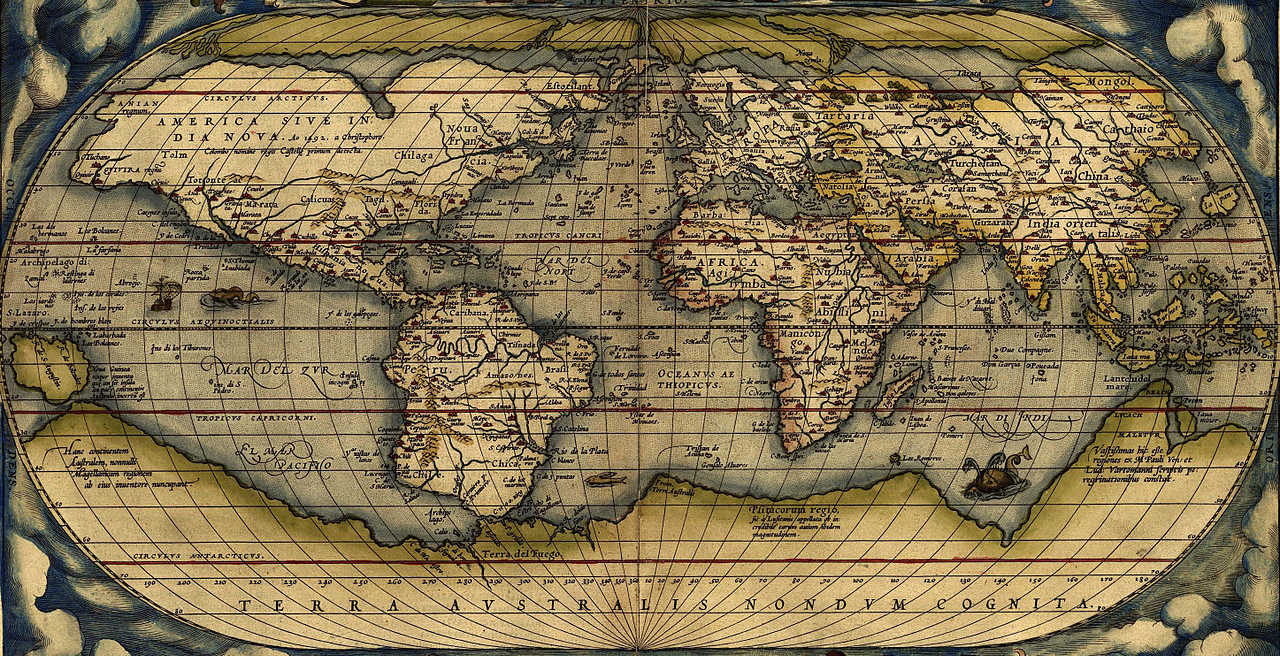
In isosceles triangle ABC, CD = AB and BE is perpendicular to AC. Show that CEB is a 3-4-5 right triangle.

In isosceles triangle ABC, CD = AB and BE is perpendicular to AC. Show that CEB is a 3-4-5 right triangle.

French philosopher Charles Fourier promoted a self-contained utopian society he called the phalanstère, or “grand hotel.” Each building would be a four-story apartment complex with two wings, one for children and noisy activities and the other containing ballrooms and meeting halls. Tasks would be assigned based on each member’s interests and desires, with higher pay going to undesirable jobs.
“In Fourier’s utopia, social harmony was guaranteed by assembling exactly 1,620 members, since he believed there were just twelve common passions that resulted in 810 types of character,” writes Damien Rudd in Sad Topographies. “In this way, every possible want, need and desire could be duly satisfied. It would be a society free of government, unfettered capitalism and the oppressive labour exploitation Fourier saw as the scourge of the modern world.”
The idea fell flat in Europe, but seven years after Fourier’s death in 1837 a group of idealistic followers built a community along the Ohio River based on his teachings. For $25 each subscribing family would get a timber house and a portion of land. It fell apart when Fourier’s promised “80,000 years of perfect harmony” failed to materialize.
In 1801, distressed at the “incoherence” and “bizarreness” of Paris street names, J.B. Pujoulx proposed turning the city into a stylized map of France in which the streets were named after towns and localities, with the size of each town reflected in the size of the street. Rivers and mountains would be represented by especially long streets that crossed several districts, “to provide an ensemble such that a traveller could acquire geographic knowledge of France within Paris, and reciprocally of Paris within France.”
How fine it would be, he wrote, “for the resident of the South of France to rediscover, in the names of the various districts of Paris, those of the place where he was born, of the town where his wife came into the world, of the village where he spent his early years!” Louis-Sébastien Mercier added, “Paris would be the map and hackney coaches the professors.”
Perhaps unwittingly, Pujoulx was echoing the cartographer Étienne Teisserenc, who in 1754 had offered a “Dictionary, Containing the Explanation of Paris or Its Map Turned into a Geographical Map of the Kingdom of France, to Serve as Introduction to General Geography; An Easy and New Method to Learn in a Practical Manner and on the Spot All the Principal Parts of the Kingdom as a Whole and Each Through the Others” (above). He suggested that this system might be extended to every state in the world.
When Yevgenia Ginzburg became a prisoner at Stalin’s Black Lake prison in the 1930s, she and her cellmate noticed a curious pattern. “On the days when our neighbor went to the washroom before us — this we could tell by the sound of the footsteps in the corridor — we always found the shelf sprinkled with tooth powder and the word ‘Greetings’ traced in it with something very fine like a pin, and as soon as we got back to our cell, a brief message was tapped on the wall. After that, he immediately stopped.”
After two or three days, she realized what it meant. “‘Greetings’! That’s what he’s tapping. He writes and taps the same word. Now we know how we can work out the signs for the different letters.” Ginzburg remembered a page from Vera Figner’s memoir in which she described an ancient prison code devised in the Czarist era — the alphabet was laid out in a square (this example is in English):
A B C D E F G H I J K L M N O P Q R S T U V W X Y
Each letter is represented by two sets of taps, one slow and the other fast. The slow taps indicate the row and the fast the column. So, here, three slow taps followed by two fast ones would indicate the letter L. They tapped out “Who are you?”, and “Through the grim stone wall we could sense the joy of the man on the other side. At last we had understood! His endless patience had been rewarded.”
Prisoner Alexander Dolgun deciphered the same code in Moscow’s Lefortovo Prison, memorizing it with the help of matches. Finally he understood that the man in the next cell had been asking him “Who are you?” over and over — and felt “a rush of pure love for a man who has been asking me for three months who I am.”
(From Judith A. Scheffler, Wall Tappings, 1986.)
How I need a drink, alcoholic of course, after the tough chapters involving quantum mechanics!
That sentence is often offered as a mnemonic for pi — if we count the letters in each word we get 3.14159265358979. But systems like this are a bit treacherous: The mnemonic presents a memorable idea, but that’s of no value unless you can always recall exactly the right words to express it.
In 1996 Princeton mathematician John Horton Conway suggested that a better way is to focus on the sound and rhythm of the spoken digits themselves, arranging them into groups based on “rhymes” and “alliteration”:
_ _ _
3 point 1415 9265 35
^ ^
_ _ _ _ _ _ __
8979 3238 4626 4338 3279
** **^^ ^^ ****
. _ _ __ _ _ _ . _ .
502 884 197 169 399 375 105 820 974 944
^ ^ ^ ^
59230 78164
_ _ _ _
0628 6208 998 6280
^^ ^^ ^^
.. _ .._
34825 34211 70679
^ ^
He walks through the first 100 digits here.
“I have often maintained that any person of normal intelligence can memorize 50 places in half-an-hour, and often been challenged by people who think THEY won’t be able to, and have then promptly proved them wrong,” he writes. “On such occasions, they are usually easily persuaded to go on up to 100 places in the next half-hour.”
“Anyone who does this should note that the initial process of ‘getting them in’ is quite easy; but that the digits won’t then ‘stick’ for a long time unless one recites them a dozen or more times in the first day, half-a-dozen times per day thereafter for about a week, a few times a week for the next month or so, and every now and then thereafter.” But then, with the occasional brushing up, you’ll know pi to 100 places!

Maxims of George Washington:
“Wherever and whenever one person is found adequate to the discharge of a duty by close application thereto, it is worse executed by two persons, and scarcely done at all if three or more are employed therein.”


This is not a distorted photo — Italian designer Ferruccio Laviani devised this cabinet deliberately to create that effect.
The “Good Vibrations” storage unit, created for furniture brand Fratelli Boffi, was carved from oak by a CNC machine.
Below: In 2012, designers Estudio Guto Requena modeled three iconic Brazilian chair designs in 3D software and then fused those files with audio recorded in three São Paulo neighborhoods. The deformed designs were then sent to Belgium to be 3D-printed. They’re called “Nóize Chairs.”

James McNeill Whistler to a publican:
“My man, would you like to sell a great deal more beer than you do?”
“Aye, sir, that I would.”
“Then don’t sell so much froth.”

Think of it like this: Geography is riding in a car along with Science and Art. Geography is, in fact, riding in the back seat. Science has been driving for seventy-five years, fighting with Art all the way. Science scorns Art; Art sneers at Science. Neither pays much attention to Geography, except for help with reading the map. Geography tries to take a nap, but cannot sleep. Geography tries to understand why Art and Science fight so, but gives up and looks out the window, which is really more interesting than the fight anyway. Art protests that Science drives too fast. Science snaps back that Art does not understand how to make progress. Geography sometimes sides with Art, often with Science, but neither cares much, nor do either of them care when Geography announces that they are now passing Cleveland. (Science grunts, eyes straight ahead; Art faces so as not to see Cleveland.) Finally, Geography can take no more and tells Science to pull in at the next rest stop.
— W.T. Grvaldy-Sczny, “A Diamond Anniversary,” Annals of the Association of American Geographers 69 (1979), 1-3.